Published August 3, 2025 12:40AM
Destinations & Things To Do
Why Skirts Are Power for the Climbing Cholitas of Bolivia
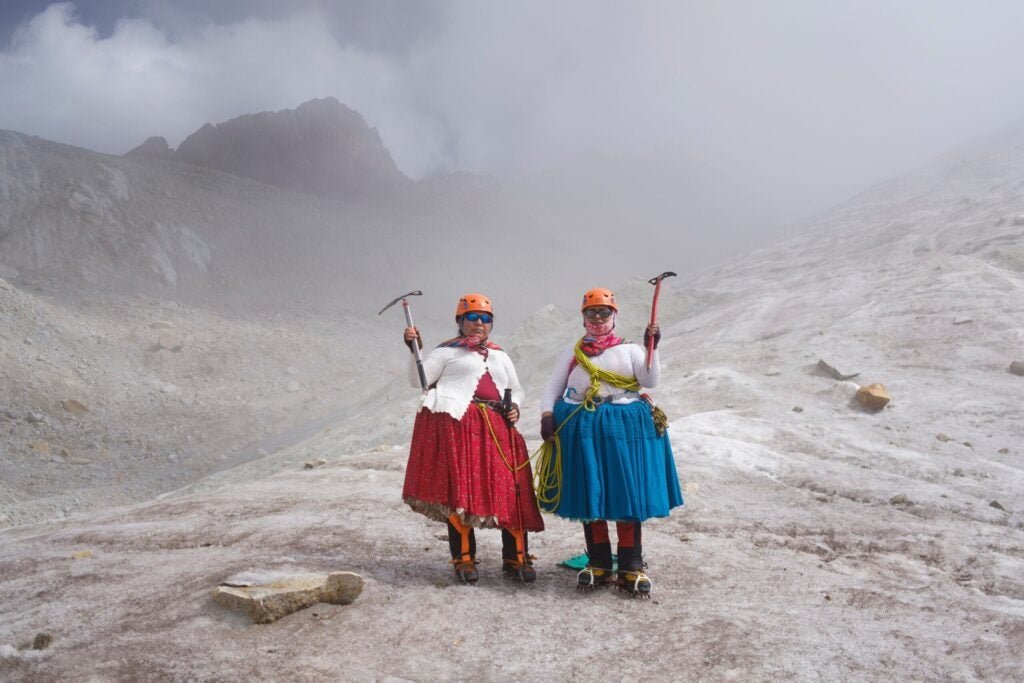
In a sport of many shoulds and should nots, rules and taboos, the climbing Cholitas of Bolivia could care less what you think. The reason may lie in the word “cholita” itself. It’s originally a derogatory term stemming from the Spanish slur “cholo,” meaning mixed race or Indigenous with defamatory canine undertones. But the Indigenous Aymara women of Bolivia have chosen to reclaim and rebrand the slur. Today, there are skateboarding cholitas, fighting cholitas (wrestlers), and climbing cholitas.
Several years ago, I saw a picture of these women ice climbing in their traditional dress, their bold colors striking against the bluish white of frozen water. Climbing with crampons in a wide pleated skirt seemed like a massive challenge, though they appeared unbothered by their non-technical clothing. Considering my own challenges poking holes in the hems of the ski pants I first climbed in before acquiring gaiters or ice climbing pants, I was duly impressed. And I had questions.
How did these women manage to climb mountains and water ice in those beautiful yet bulky skirts? How did they wear harnesses with their polleras? And what led them to get into climbing in the first place?
My curiosity led me to message a leader in the movement, Cecilia Llusco, on WhatsApp. Llusco doesn’t speak English, so I texted with her using my mediocre Spanish. She told me that she established what was the first of several Cholitas Escaladoras movements in Bolivia. Soon after, I found Manuel Seoane, a Bolivian bilingual photojournalist based in La Paz, about a 45-minute drive from El Alto, where Llusco lives.
In May, Seoane met up with Llusco and a fellow cholita, Natalia Tarqui, to record an interview and film them climbing up the Bolivian peak Huayna Potosi. A decade ago, this peak was Llusco’s first summit. One day, when she can save up enough money, she hopes to finally stage a proper wedding with her husband atop the mountain, surrounded by her cholita companions.
Here, Llusco shared the moment she first began to dream of standing on a summit, the logistics of climbing in a skirt, and how climbing has changed her life for good.
Cecilia Llusco’s Story
I am the founder of the first group of cholita climbers. We are a group of Indigenous Aymara women who wear a pollera (skirt). We founded the Cholita Escaladora in 2015 because there was a lot of femicide and discrimination against women in pollera.
I was born in the Chucura Community in Murillo Province, a tourist destination. I left my hometown a long time ago, but sometimes I visit. When I was eight years old, I went to Huayna Potosi for the first time. I saw a very beautiful mountain that was all white with snow. I said, “Why can’t I climb it? How does it feel to be up there?” It became a dream I had as a child. I worked with my father then, so I did not know anything. It was just a dream.
But then I grew up and I worked as a porter. I met many women along the way working as porters, as cooks. It was not easy for us to climb a mountain. It has always been complicated to get equipment. I would have started climbing earlier, but we did not have the equipment.
In 2015, I said, “Why can’t we women climb to the top of mountains—with our clothes—and share a message of empowerment for women?”
On Establishing the Group Cholitas Escaladoras
I founded the group Cholitas with Lidia Huayllas, who is a cook in the tourism industry. We got the women together to share the dream that each one of us had.
We climbed our first mountain on December 17, 2015: Huayna Potosi (6,088m). There were 11 women. It was very beautiful to share this with them. We never imagined that we were going to be on television or in other countries.
When we were at the high camp, we received a lot of criticism from male guides, who questioned us about what we were doing on the mountain. They were saying that because of us, it was not going to snow on the mountain, or that we are going to have accidents because of our skirts.
We have received a lot of criticism and a lot of discrimination. But we have “covered our ears” and moved forward with strength. We reached the top without any problems. As 11 Indigenous women, we reached 6,088 meters. When we crowned the summit, we promised that we will not leave this achievement here. We will continue climbing more mountains. As we have conquered Huayna Potosi, we will continue conquering more mountains.
How and Why Cholitas Climb in Pollera (skirts)
I had the idea of putting the harness on the inside [of the skirts], through the seam. We pull the harness up through the top of the skirt, through the inside.
To climb an ice wall, the skirt is a bit complicated to use with crampons. We pull the front of the skirt around and over our waist, so that we don’t trip.
Of course, it was difficult at the beginning for each of us to use the crampons and the skirts, because it is not easy, as many say. But even though it is not easy, nothing is impossible for women. We can achieve anything we set our minds to. We have always managed to do everything with our clothes.
Many people think that we take our skirts off [when we climb] and put them back on at the top, but we don’t. I have been used to it since I was a child. I have already adapted to it. With the crampons, it has been a little difficult, but we have already learned it.
Now as a high mountain guide, I have much more experience moving in the skirt. People want to go climb with the cholitas climbers. For me, it is a pride to wear my dress, and to represent the Indigenous Aymara women and all women.
So we continue to wear our skirts. We don’t want to take them off for any reason.
When people ask us, “Do you have to take off your skirts to climb Everest?” I say, “We are not going to take off our skirts.”
[They ask:] “But how are you going to put them on with the down overalls?” We know how to put them on and we will never take off our skirts.
Now we are trained to handle our skirts, because on Illimani and on Huayna [Potosi], we broke many petticoats with the crampons. Suddenly, it would get caught and break. It’s a thin fabric, so it rips easily. I have destroyed two sets of skirts to get to know the mountains in Bolivia. After that, we got better [at climbing in skirts] and now we don’t break the petticoats anymore.
The Gear Crux of the Cholitas
We cholitas have never had equipment, because it is difficult to get it here in Bolivia. We have always rented the boots, the crampons, and the harness. All those things are very important in the mountains for us, but we don’t have the equipment. For myself, I have a helmet, which I got from the film [the 2019 documentary Cholitas]. The rest, we don’t have.
The boots, the crampons, the ice axes, the helmet, and the harness are the most important things that we need. Also the screws, the ATC, the rope—all that we still rent.
The Eight-Mountain Project
We made a project to climb eight mountains of more than 6,000 meters and we committed.
We were thinking about being accompanied by our husbands, since most of them are mountain guides. They also helped us learn. They were the ones who supported us and told us: You are strong and brave women. You can also conquer mountains outside the country and climb the highest mountain in South America. We were already dreaming of leaving the country, but first, we had to climb all the mountains in Bolivia.
Our second mountain was Acotango [6,052m; on the border of Bolivia and Chile]. The third mountain was Illimani [6,402m; Bolivia]. The fourth mountain was Parinacota [6,336m; on the border of Bolivia and Chile]. Then Sajama [6,542m; Bolivia]. Finally, we climbed Aconcagua [6,959m; Argentina] outside the country, which is in the documentary film called Cholitas. For recording or filming any stories, they come from outside the country. It is very sad that in Bolivia, we do not have that support.
It has been very difficult, but we have broken many barriers and we have become very empowered. Nothing and nobody is going to stop us. We are going to keep going, keep climbing more mountains.
Llusco’s Guiding Work
They [clients] contact me directly through my Instagram and tell me they want to go with me personally. As I do not have equipment, I have to rent for me and for the clients, too. Many of them do have equipment.
In Huayna Potosi or [Pequeño] Alpamayo, I usually guide alone. On Illimani, I need some help, but now I am training myself with some courses in first aid, rescue, and high-altitude mountaineering.
When I go as a guide, I do not miss [the opportunity] to train on the glacier of Huayna Potosi. The ice wall has an inclination of about 100 degrees, and it’s about 30 or 40 meters high.
“Un Sueño Más Grande”
After Aconcagua, we had a bigger dream, which is Mount Everest. That is my big dream. Someday I plan to achieve it with at least one companion, to carry the name of the group. I hope someday I can fulfill my dream.
Our goal is to climb Everest on the Nepal side in 2026. We will have a crowdfunding account so people can support us there. I have to train constantly to go to the highest mountain in the world.
This year, I have my climbing dates already planned. I have to climb the French route [up Huayna Potosi], which is the direct route. It has 450 meters of climbing with different techniques. Then I am going to climb the most difficult mountain in Bolivia—Illampu [6,368m]—in the middle of June. It is usually done in seven days, but I will do it in two days.
So that is my dream that I have—let’s say, my project.
The Next Generation of Cholitas
The new generation for us is a great joy, because the years do not pass in vain. We are getting older, so we are motivating the young girls who are now the new generation. There are also 16-year-olds and 18-year-olds, who are now coming with us and learning from us.
My daughter Camila, for example, I climbed with her when she was 13 years old. Her first mountain was the small Alpamayo [5,425m], which is a little more technical. She had learned with her father before that and now she manages very well. I would say she is better than me.
One day, we were filming with a German channel, and my little girl wanted to go. “I want to know the mountain. I want to see how they climb,” she said. She was curious, the six-year-old girl. So we took her to the glacier.
I like the young ones to come with us, so that there is a new generation and that we continue to move forward. It would be incredible for us to have a bigger group.
How Climbing Has Changed Llusco’s Life
Among the group of cholitas who have already left the country, we have left our fear on Aconcagua. Now we know how to express ourselves a little bit. Before, we were afraid to express ourselves on television. “I might speak badly,” we thought. But now we are no longer afraid.
It has also changed our family. Now, for example, in my family I say: “I am traveling. I am going to travel, I am traveling to Spain. I am going.”
Then I went to Aconcagua again. I told my husband: “I am traveling—you have to support me.” Without thinking about it, I signed up for a project for women of the world. So I said, “I have to travel and you stay with the children.”
Before it was different. It has changed my life and that of each of the cholitas as well. I have seen it, but it has been incredible, for the good of all women.
Also, because my husband is very good, thanks to him, I’ve learned many things. He understands me, he teaches me. He tells me: “Go on, good luck, enjoy yourself.” And my children also say: “Good luck, mom, good luck. You are going to bring us the medal.” And the medal, for them, is to reach the top of the mountains and to say, “Here I am. I made it.”
Watch Llusco and Another Cholita Climbing This Past May on Huayna Potosi in Bolivia
You can find more information about Llusco’s goal of climbing Everest in 2026—and how to support her and the Cholitas Escaladoras—here. The Cholitas are also looking for gear sponsors for Everest and other climbing projects.
About the photographer/videographer: Manuel Seoane is a Bolivian freelance photojournalist and hydrologist. His work has reached the final rounds in World Press Photo Contests. Since 2018, he has been part of the National Geographic Explorers program. He is a Reuters and Pulitzer Center fellow who has worked on projects with Bloomberg, The Guardian, and more publications. He studied photojournalism at DMJX in Denmark.
Destinations & Things To Do
Traveling to Turkey? Beware of Hidden Dangers in Popular Outdoor Activities and Water Sports

Sunday, August 3, 2025
Turkey, a top destination for UK families and tourists alike, is renowned for its stunning landscapes, rich culture, and warm climate. However, while the country offers an array of outdoor and adventure tourism activities, the Foreign, Commonwealth & Development Office (FCDO) urges travelers to be cautious and properly research their planned activities. From water sports to jeep safaris, there are a number of potential risks that travelers need to be aware of to ensure their holiday stays safe and enjoyable.
For UK travelers planning a family vacation or business trip to Turkey, it’s crucial to be aware of the country’s regional risks. The FCDO provides extensive travel guidance and safety recommendations on their official website, helping travelers make informed decisions about their destinations. The FCDO also emphasizes the importance of obtaining adequate travel insurance, which should cover all planned activities and provide coverage for unexpected emergencies.
Safety Risks in Outdoor Activities
Turkey’s diverse landscapes offer some of the best outdoor adventure experiences, including water sports, hiking, and jeep safaris. However, many of these activities come with inherent risks, particularly if proper precautions are not taken. The FCDO advises that travelers ensure their water sports activities are booked through licensed centers. Before engaging in water activities, it is essential to complete the necessary paperwork, request a safety demonstration, and familiarize yourself with the emergency procedures, including how to call for help.
The Royal Life Saving Society (RLSS) highlights that an average of 82 UK citizens drown abroad each year, and water sports can be particularly hazardous. Travelers are advised to obey warning signs and flags on beaches and follow lifeguard instructions. These safety measures are crucial in ensuring a safe experience for everyone, particularly when traveling with family. Understanding what each flag color represents and taking the time to read safety notices can make all the difference in preventing accidents.
Jeep Safari and Other Adventure Risks
Jeep safaris are another popular adventure activity in Turkey, but they too come with risks. In 2023, several accidents were reported, prompting the FCDO to issue a warning about the safety of such excursions. Travelers are encouraged to only book jeep safaris with reputable companies that adhere to strict safety and health protocols. Ensuring that the vehicles are equipped with proper safety gear is crucial for a safe and enjoyable experience.
Similarly, activities like paragliding and quad biking, which are often popular in the region’s rugged terrain, require careful research and preparation. These extreme sports can be exhilarating, but they can also pose significant safety risks if not conducted with the right equipment and experienced instructors. It is essential for tourists to ensure these activities are covered under their travel insurance before embarking on them.
Travel Insurance and Important Documents
One of the key pieces of advice from the FCDO is the importance of securing comprehensive travel insurance. The policy should cover not only emergency medical expenses but also any adventure activities planned during the trip. Many travelers underestimate the importance of insurance, but it can be vital if accidents occur.
Travelers should also check that their passport meets entry requirements for Turkey. The FCDO advises that travelers ensure their passport has at least 150 days left before it expires upon arrival and contains at least one blank page. It is always recommended to double-check with travel providers to ensure all documents meet the required criteria.
Impact on Business and Family Travel
For business travelers, the risks associated with outdoor activities can be just as pertinent as for families. If you are traveling for work and plan to engage in adventure tourism, it’s essential to take precautions to avoid disruptions to business plans. Ensuring that team-building activities or incentive trips are thoroughly researched, safe, and covered by insurance can help prevent unforeseen issues.
For families, while Turkey’s landscapes offer beautiful backdrops for vacations, the risks associated with adventure tourism are particularly concerning for those with young children or elderly relatives. It’s essential to thoroughly research activities that are suitable for all ages and abilities. Having a clear understanding of what activities are safest for the entire family can prevent accidents and allow families to enjoy their vacation without worry.
Quick Tips for Safe Travel in Turkey
- Do Your Research: Always research outdoor activities beforehand. Check reviews and ensure that operators follow safety standards.
- Obey Local Safety Signs: Pay attention to warning flags at beaches and follow all safety instructions from lifeguards.
- Choose Reputable Tour Providers: Whether it’s a jeep safari or an extreme sport, ensure that the tour operator is reputable and adheres to safety regulations.
- Invest in Travel Insurance: Make sure your insurance covers adventure activities and emergencies. This ensures you’re financially protected.
- Check Passport and Travel Documents: Ensure your passport is valid for at least 150 days after your arrival date, and that it meets Turkish entry requirements.
Conclusion: Ensuring a Safe and Enjoyable Trip to Turkey
While Turkey remains one of the most beautiful and enticing travel destinations for families and business travelers alike, it’s essential to be cautious when participating in adventure tourism. The FCDO’s travel advice offers important insights that can help travelers mitigate risks and ensure a smooth trip. By researching destinations and activities thoroughly, following safety guidelines, and securing the right travel insurance, UK nationals can enjoy Turkey’s attractions while minimizing potential dangers. Always keep safety top of mind to ensure that your Turkish adventure remains a memorable and safe experience for all involved.
Destinations & Things To Do
Day 88: A Challenge to Our Commitment to Flexibility
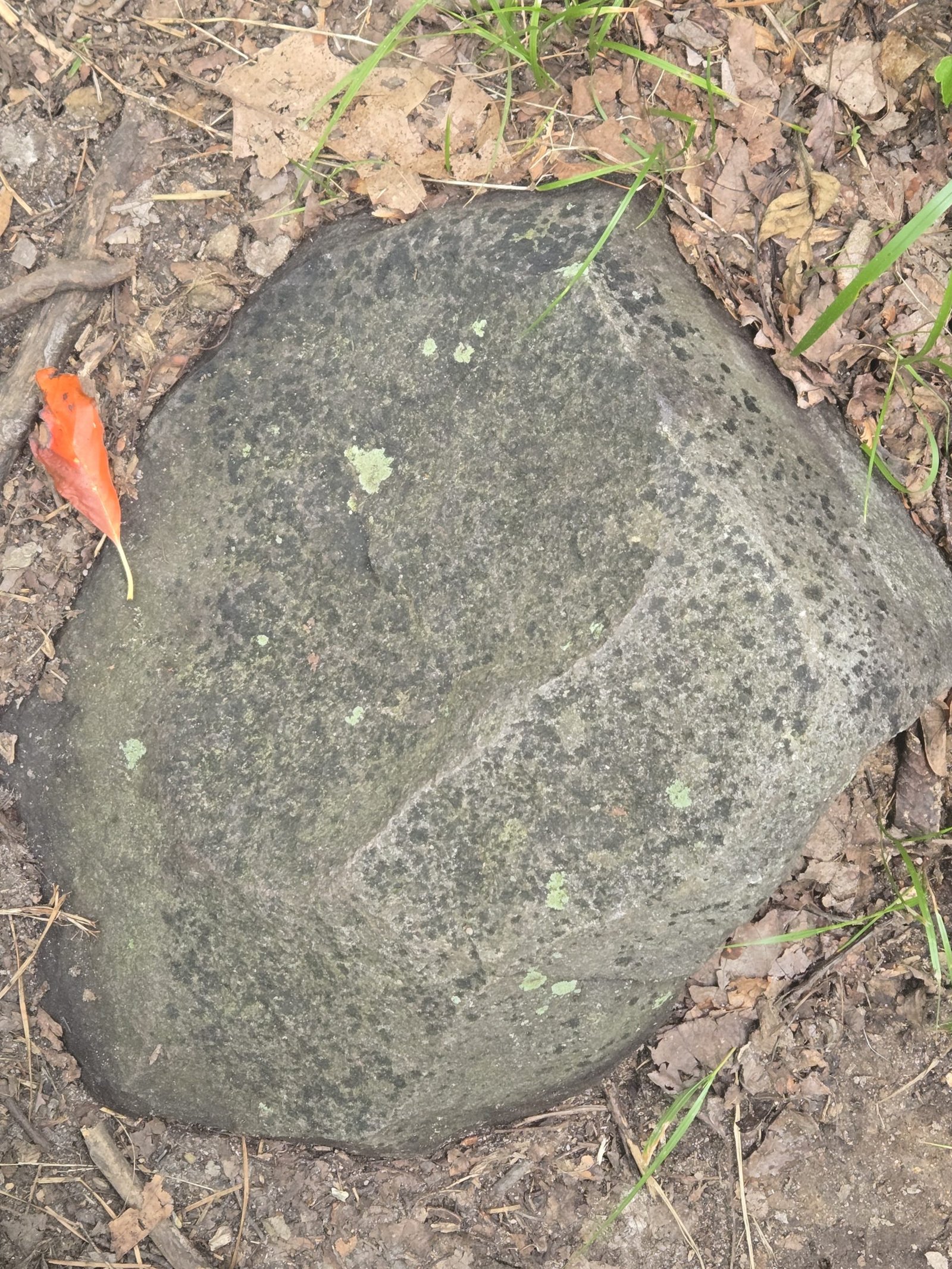
- Sam Moore Shelter (1002.9) to Bears Den Hostel (1005.9)
- 1148 feet ascent, 791 feet descent
Sometimes being close makes things feel worse. We only have 3.6 miles to cover today, and less than a mile tomorrow. We had planned to hike both of these short distances today and be to the end of Virginia. It didn’t happen. We had given the hostel in Harpers Ferry a target date, give or take 1 day and the give or take gave and took. We had no internet and were unable to reach our hosts until today and then only to find out there was no room for us. After a moment of distress, we righted our ship and made it OK to take two days. We are out here to learn to live in the moment so this was a good test.
We are on the Trail to reorient and “chill.” The past 15 years for us have included multiple major losses that we were expected to control, and did, but at a great cost to our emotional, financial, and physical health. We, along with 65 of our neighbors, lost our home and all of our possessions to wildfire. We lived apart for years care-giving for protracted cancer and COVID deaths of elders and complex, distressing estates for which we were the executors. When the dust settled, we told the family and friends we needed a break. Everyone was amazing. The elder we currently care for told people we were going “on sabbatical” for four months while we finished the AT. Before we left, we cooked 150 meals for her in advance. Her friends and our family helped with transportation for healthcare. Through the magic of the internet we managed her finances and personal care supply deliveries from the Trail. An extra night in Virginia was the perfect opportunity to test our our emotional reaction to renewed flexibility.
Bears Den, not Halfway Hideaway Hostel
When we originally planned the end of our Virginia section, we considered staying at Bears Den Hostel. It is an official hiker’s hostel owned by the Appalachian Trail Conservancy and operated by the Potomac Appalachian Trail Club. Since we have been trying to experience the iconic AT things, it fit our list. We also wanted to go to Harpers Ferry so that we could go to the Appalachian Trail Conservancy office. I had already hiked the distance between Snickers Gap and Harpers Ferry in 1975 so left Bears Den on the list of options, but decided to get a shuttle from Snickers Gap to Harpers Ferry.
When we finally got to the top of a hill where we could get a connection to the Hostel, they told us they had no space for us tonight. We were looking forward to being done with Virginia, but took the extra day in stride. We made jokes about Virginia having the last word, something she did often on the trail. “Virginia is flat” is true, but flat with tipper and tripper rocks. “Virginia is flat” but Mount Rogers, The James River and the Three Ridges are decidedly not flat. “Virginia feels like it never ends” is true and we were given one last chance to discover how long the AT in Virginia is.
Either we were too hot to care, or we really were OK with the change in our schedule. Neither of us was upset and we had a good time at Bears Den.
Hm. . .Someone Made it Hot?
When we started out after breakfast, we congratulated each other on the short day. We were planning to zip over the 3.6 miles of Roller Coaster trail as if it was nothing. I don’t know why we were thinking we had a “nothing burger” for the day. When we hit the 500 foot climb in 90/90 (90 degrees with 90% humidity) we both acted as if someone had played a trick on us. Short must equate to cool, right?
Silly hikers. No. Hot is hot. Short is short. Hot short is not short. Hot makes you go slower and slower we did go.
The benefit of knowing we did not have anywhere else to be today was we felt at liberty to take as many breaks as we wanted, and for as long as we wanted.
During our breaks we meet multiple other very interesting hikers, including a day hiker who had a son teaching at University of Wyoming from whence we graduated. The heat of the day lead to a round of “it is so cold in Laramie, Wyoming” stories. We were all laughing and enjoying the cold memories.
The Rocks Are Different
Give that the Roller Coaster is effectively all lower-altitude, 2nd growth forest of a similar type, neither the views or the vegetation commads much attention. As I was staring at the ground, trying not to trip on the Virginia rocks that are not technically there according to tradition, I got to thinking about how different the rocks here in Northern Virginia are from the rocks in Southern Virginia.
From the hikers perspective, falling on a Northern Virginia rock is potentially less painful than falling on Southern Virginia rocks. Southern Virginia rocks are sharper than the Northern Virginia rocks. Much of Southern Virginia is composed of fine-grained volcanic Rhyolite and when it breaks it can form sharp edges. Northern Virginia rocks demonstrate more weathering and erosion. In addition to mechanical weathering from forces like ice, water and wind, they are subject to spheroidal weathering in which the corners and edges wear faster than the flat surfaces.
This is a spheroidal weathered rock I found today.
Northern Virginia’s geology had limited limestone formations and is largely eroded igneous and metamorphic rocks, with some sedimentary deposits. Southern Virginia’s geology has a broader range of rock across different physiographic provinces including older rocks and more limestone deposits.
Flowers and Bugs
Of course, along with the rocks, we noticed the flowers and bugs. Two flowers we have not seen often included Campanulastrum americanum (Linnaeus) Tall Bellflower and
Aegopodium podagraria L. commonly called ground elder, herb gerard, bishop’s weed, goutweed, gout wort, and snow-in-the-mountain.
Bears Den
We finally arrived at Bears Den. The grounds and buildings were, as promised, very special.
There was a secret password that could be figured out from hiking clues so we could let ourselves inside. The hiker hostel is in the basement and was relatively cool compared to outside. There were the typical hiker-hostel directions so we found bunks, towels, and got baths. We even found a phone number for a shuttle driver who was happy to help us get from Snickers Gap to Harpers Ferry tomorrow.
We were flat out of food, as we had not expected to be on the trail after tonight. I discovered we could pay a small fortune to have food delivered to us so I placed an order. The Historian wanted a burger and I got nachos. An entree salad for sharing was the perfect balance.
The food came just after the upstairs of the Hostel opened. I waited outside for the driver while The Historian checked us in.
The driver was ever so kind. He had done a lot of section hikes and was delighted to bring food to the Hiker Hostel. His companion was amused by our story and we all laughed when she announced she was born in 1975 when I set out for my original hike. They wished us well and drove off.
It was perfect timing. We were able to spread out on the large dining table in the beautiful stone dining room and eat to our heart’s content.
We even had an audience, although we were warned not to feed them. The dogs could not read the signs so expected to be fed.
Dinner was topped off with a full pint of ice cream each. Yum. Won’t be doing that when we go back home.
The Rewards of Flexibility
So many things felt uncomfortable this morning. The heat, delaying departing Virginia, and how to get from Snickers Gap to Harpers Ferry had been weighing on us. We committed to living on the path we were on and taking the moments of the day as they came.
Before the day’s end, we had solved all of our conundrums for the day. After a short hike with visits, a shower, a satisfying meal, and the promise of a shuttle at the end of Virginia, it was a perfectly flexible day.
This website contains affiliate links, which means The Trek may receive a percentage of any product or service you purchase using the links in the articles or advertisements. The buyer pays the same price as they would otherwise, and your purchase helps to support The Trek’s ongoing goal to serve you quality backpacking advice and information. Thanks for your support!
To learn more, please visit the About This Site page.
Destinations & Things To Do
What You Need to Know About Sun Exposure and Skin Cancer
Skin cancer rates are rising and one in five Americans will be diagnosed with it before the age of 70
(Photo: Applying sunscreen: Oscar Wong/Getty; Design: Ayana Underwood/Canva)
You hear the same advice every summer: slather on sunscreen and limit your time in the sun. Those rules still apply, but not everyone is getting the message.
Skin cancer is the most common type of cancer in the United States, according to the Skin Cancer Foundation; one out of every five people will develop skin cancer before the age of 70. Over the past three decades, skin cancer rates have gone up. Between 2011 and 2019 alone, rates increased by 31.5 percent. What’s behind the rise?
“The overall increase in skin cancers has to do with cumulative sun exposure combined with lack of adequate sun block or protection from UVA/UVB rays,” says Dr. Ava Shamban, a board-certified dermatologist in Los Angeles, California.
It’s time to get smarter about your sun exposure. Here are five things you need to know about sun exposure, according to a dermatologist, plus tips for enjoying the sun more safely.
1. Wearing Sunscreen Every Day of the Year Is a Must
You may not think about wearing sunscreen when it’s cloudy or rainy or even during winter. Yet you should. Why?
“The most harmful ultraviolet rays are present every day,” Shamban says. “They don’t retreat in winter and can filter through dark cloud coverage, which is why any uncovered areas of the body at any time of the year are exposed and vulnerable to the damage of the sun’s UV rays.”
Dermatologist-approved tips:
- Lather on sunscreen after you shower: make sunscreen application as much a part of your daily routine as brushing your teeth. Choose a broad-spectrum sunscreen that protects against UVA and UVB with an SPF of at least 30 and slather it on when you get out of the shower in the morning, as you would lotion.
- Put it on areas likely to be exposed to sunlight: this includes your legs, arms, shoulders, décolletage, neck, face, ears, and hands. The American Cancer Society also suggests a lip balm with sunscreen. You might even add a hand cream, moisturizer, or makeup with sun protection to your daily routine. These won’t replace sunscreen but will offer added support for vulnerable areas that are never covered in your reapplication plan, Shamban says.
2. One Bottle of Sunscreen Should Only Last You a Couple of Months
How quickly you go through that sunscreen depends not only on how big the bottle is but also on how well you’re applying it. In general, though, aim to go through at least one bottle during the summer, more if you’re sharing that bottle with others. If your bottle lingers, it’s a sign you’re probably not using enough.
Dermatologist-approved tips:
- Measure one ounce of sunscreen: The Skin Cancer Foundation recommends applying an ounce of sunscreen to your face and body. That’s about the size of a shot glass; for easy reference, keep a shot glass in your bathroom to help you measure it, Shamban says.
- Don’t skip your face: Your face alone should get a nickel-sized amount, says Dr. Adele Haimovic, a dermatologist based in New York. You should then reapply every two hours, she says.
- Don’t use expired sunscreen: Just watch those expiration dates, as sunscreen breaks down over time. “I’ve seen people who have gotten burns because they used expired sunscreen,” she adds. Once a year, go through all your sunscreens and toss any that have expired.
3. Skin Cancer Around the Eyes Is More Common Than You Think
Although any exposed skin may be prone to developing skin cancer, the skin around your eyes is particularly vulnerable because it’s thin and delicate, Shamban says. Roughly five to 10 percent of all basal cell carcinomas occur on the eyelids.
Dermatologist-approved tips:
- Wear polarized sunglasses: While you should always wear sun-protective eyewear when outdoors, choose a darker, polarized lens rated for ultraviolet protection; most sunglasses don’t have enough UV protection alone.
- Toss on a hat: If you don’t have polarized glasses, opt for a wide-brimmed hat that gives you at least three inches of shade. You can also use an umbrella to limit sun exposure.
- Consider alternative sun care products: Sunscreen is crucial, but if it bothers your eyes and causes a stinging sensation, use a mineral version, one containing zinc oxide and/or titanium dioxide, Haimovic says. You can also try a fragrance-free sunscreen for sensitive skin. Alternatively, use a protective powder with an SPF rating for your eyelids; try a stick formula or one with a “doe foot” applicator, which allows more precise application versus your finger, Shamban says. A broad-based sun-protection eye cream will also do the trick.
4. UV Light Can Penetrate Through Windows
Being by windows can give your mental health a boost, but know that those windows, whether in your home, office, or car, will expose you to harmful UV rays. There are two types of rays—UVA and UVB—and each one affects the skin differently. UVB rays are the classic burning rays, the most common cause of sunburns and the type most associated with skin cancer, says Haimovic.
Meanwhile, although UVA rays can cause sun damage and also lead to skin cancer, they’re associated more with aging, and it’s these rays that penetrate more through windows. “Most glass does not protect against UVA exposure,” Shamban says, adding that while some of the UVB rays get through, all of the UVA rays do. That’s one reason year-round sunscreen is so critical on exposed parts of your body.
Dermatologist-approved tips:
- Buy UV protection shields for car windows.
- Clothing can even add another layer of protection.
- Look for detergents that wash sun protection into your clothing.
5. Training Outside Increases Skin Cancer Risk
While this may be a no-brainer, it’s worth repeating: if you’re logging the miles outside, you’re at an increased risk of skin cancer.
- Reapply often: because you’re sweating so much sunscreen off, you ‘ll need to reapply more frequently if you’re training outside.
- Avoid the brightest times of the day: plan your workouts so you’re not outside when the rays are at their strongest, generally between 10 am and 4 pm.
Bottom line? “Even if the sun doesn’t shine, it’s not a free pass from sun protection,” Shamban says. “Ultraviolet rays don’t take a vacation, and skin cancer knows no season.”
Want more Outside health stories? Sign up for the Bodywork newsletter.
-

 Brand Stories2 weeks ago
Brand Stories2 weeks agoBloom Hotels: A Modern Vision of Hospitality Redefining Travel
-

 Brand Stories1 week ago
Brand Stories1 week agoCheQin.ai sets a new standard for hotel booking with its AI capabilities: empowering travellers to bargain, choose the best, and book with clarity.
-

 Destinations & Things To Do2 weeks ago
Destinations & Things To Do2 weeks agoUntouched Destinations: Stunning Hidden Gems You Must Visit
-

 Destinations & Things To Do1 week ago
Destinations & Things To Do1 week agoThis Hidden Beach in India Glows at Night-But Only in One Secret Season
-

 AI in Travel2 weeks ago
AI in Travel2 weeks agoAI Travel Revolution: Must-Have Guide to the Best Experience
-

 Brand Stories4 weeks ago
Brand Stories4 weeks agoVoice AI Startup ElevenLabs Plans to Add Hubs Around the World
-

 Brand Stories3 weeks ago
Brand Stories3 weeks agoHow Elon Musk’s rogue Grok chatbot became a cautionary AI tale
-

 Asia Travel Pulse4 weeks ago
Asia Travel Pulse4 weeks agoLooking For Adventure In Asia? Here Are 7 Epic Destinations You Need To Experience At Least Once – Zee News
-

 AI in Travel4 weeks ago
AI in Travel4 weeks ago‘Will AI take my job?’ A trip to a Beijing fortune-telling bar to see what lies ahead | China
-

 Brand Stories4 weeks ago
Brand Stories4 weeks agoChatGPT — the last of the great romantics

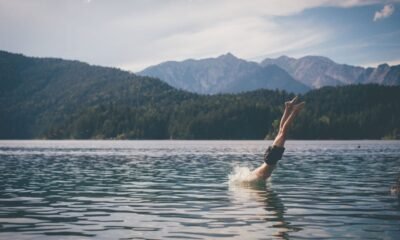

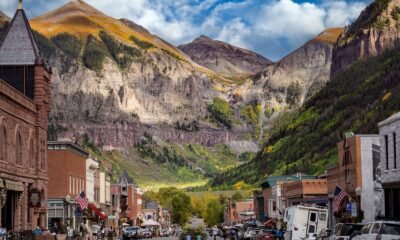

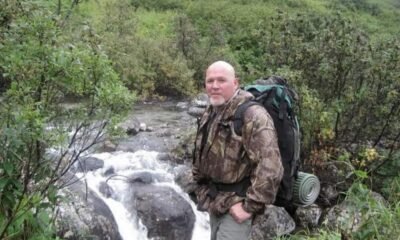

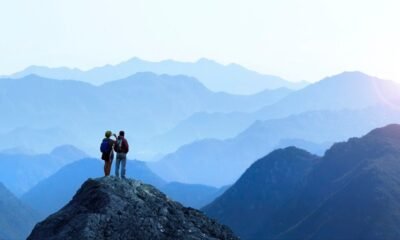

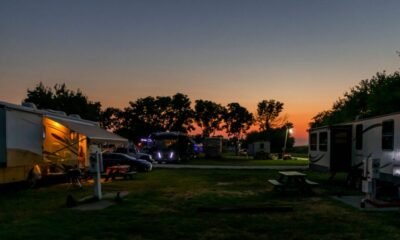



You must be logged in to post a comment Login